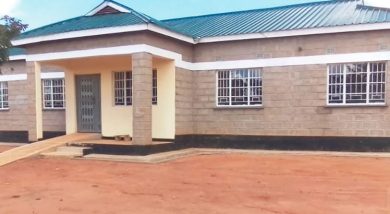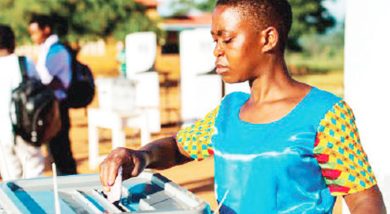Floods wipe out Bumper harvest
It is now official. Ministry of Agriculture, Irrigation and Water Development says the impact of recent floods that hit the country will reduce the bumper harvest earlier projected in the first round of crop production estimates.
In an interview yesterday, the ministry’s spokesperson Hamilton Chimala said the floods in 17 of the country’s 28 districts will affect crops, livestock and fisheries. He said the quantified losses would be communicated in due course.

He said: “We are also looking at irrigation infrastructure in terms of costing as they were also swept away. So, we believe there is a huge amount that will come out of that in terms of costing.”
In the meantime, Chimala said, the ministry is consolidating information on the damage across sectors and that a clear picture should be known this weekend.
In total, the floods washed away 71 111 hectares (ha) of food and cash crops earlier this month, translating to about 639 999 metric tonnes (MT) of potential crop production.
The loss of maize alone, the country’s staple grain, is estimated at 421 919MT in the five affected agricultural development divisions (ADDs), with Shire Valley, Machinga and Blantyre being the hardest hit.
The threat to crop production comes barely a month after Minister of Agriculture, Irrigation and Water Development Joseph Mwanamvekha announced a projected 25 percent increase in maize crop production which he attributed to the Farm Input Subsidy Programme (Fisp) despite the initiative not yielding similar results in recent years.
In announcing the first round of crop estimates in Lilongwe, the minister said the estimates indicated that maize production would go up by 25 percent from 2.6 million MT to 3.3 million MT in 2018/19.
But, following the floods, the ministry’s assessment shows that 71 111ha of maize, rice and pigeon peas have been damaged and, in the process, putting 291 470 households at risk of harvesting nothing.
The report puts Shire Valley ADD which covers Chikwawa and Nsanje districts as the worst hit with 19 127ha and 59 870 households affected followed by Blantyre ADD with 13 860 ha washed away and 82 274 households rendered helpless. In Machinga ADD, 19 971ha has been lost while in Lilongwe ADD 13 418 ha was lost to floods.
In the Northern Region, Karonga ADD faces damage of 4 735 ha of crops washed away and 12 020 households requiring assistance.
Reacting to the development, African Institute on Corporate Citizenship (AICC) rice platform manager Leonard Chimwaza whose organisation works with rice farmers across the country, said the 8 000 ha damage of rice translates to a loss of about K24 billion.
He said farmers who depend on rice will not be food secure, a situation that will have a negative impact on their nutrition status.
The agricultural sector generates around a third of the country’s gross domestic product (GDP), accounts for 65 percent of employment and wires in around 60 percent of export earnings.
Maize is by far the most dominant crop grown by almost every farmer in Malawi and accounting for about 50 percent of the entire planted area.
The results of the first round of crop estimates showed that all eight ADDs will have an increase in maize and other crop production compared to the 2017/18 agricultural season.
Shire Valley ADD which experienced floods and harvested 67 360 MT had registered a 99 percent rise in projected production to 134 597 MT.
Blantyre ADD registered 705 133 MT in the first round compared to 445 038 MT in the final round in 2017/18 while Machinga ADD had gone up by 32 percent to 337 716 MT this first round.
The results were a reflection of cause and effect of good rainfall patterns and high yields.
Since 2014/15, crop production has continued to go down as a result of either dry spells, floods and in recent years, the infestation of fall armyworms.
The second round survey was scheduled to take place between February and March for purposes of verification and correction to inform policy decisions on projected crop production in the country.
The third round of the survey will run from April through to May and involves weighing of harvest to obtain actual yield of crops based on the sampled households.
The post-disaster needs assessment dated March 24 indicated a budget of K30 billion to respond to the needs of flood victims, including food and shelter. n





